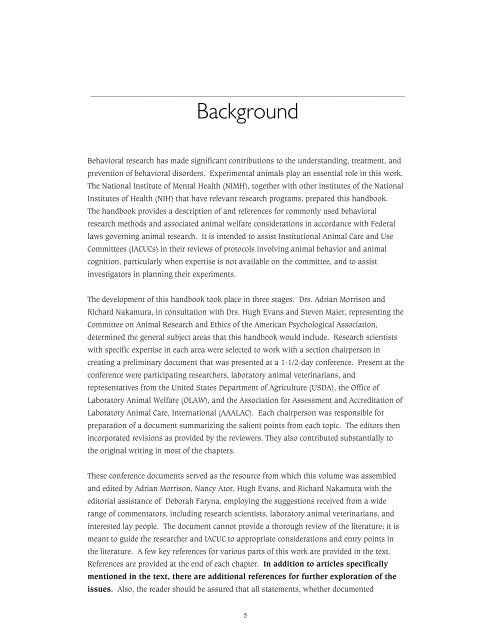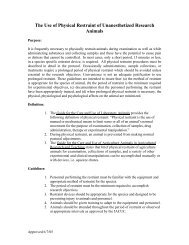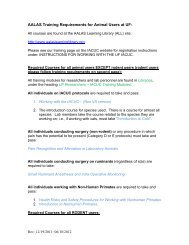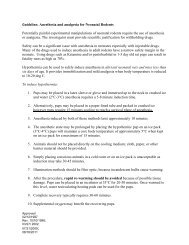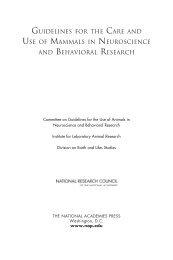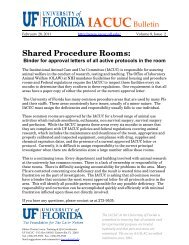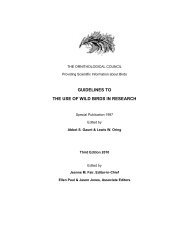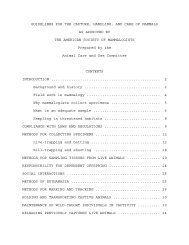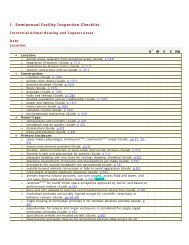Guidelines for Behavioral Research Using Animals - IACUC ...
Guidelines for Behavioral Research Using Animals - IACUC ...
Guidelines for Behavioral Research Using Animals - IACUC ...
Create successful ePaper yourself
Turn your PDF publications into a flip-book with our unique Google optimized e-Paper software.
_______________________________________________________________________________Background<strong>Behavioral</strong> research has made significant contributions to the understanding, treatment, andprevention of behavioral disorders. Experimental animals play an essential role in this work.The National Institute of Mental Health (NIMH), together with other institutes of the NationalInstitutes of Health (NIH) that have relevant research programs, prepared this handbook.The handbook provides a description of and references <strong>for</strong> commonly used behavioralresearch methods and associated animal welfare considerations in accordance with Federallaws governing animal research. It is intended to assist Institutional Animal Care and UseCommittees (<strong>IACUC</strong>s) in their reviews of protocols involving animal behavior and animalcognition, particularly when expertise is not available on the committee, and to assistinvestigators in planning their experiments.The development of this handbook took place in three stages. Drs. Adrian Morrison andRichard Nakamura, in consultation with Drs. Hugh Evans and Steven Maier, representing theCommittee on Animal <strong>Research</strong> and Ethics of the American Psychological Association,determined the general subject areas that this handbook would include. <strong>Research</strong> scientistswith specific expertise in each area were selected to work with a section chairperson increating a preliminary document that was presented at a 1-1/2-day conference. Present at theconference were participating researchers, laboratory animal veterinarians, andrepresentatives from the United States Department of Agriculture (USDA), the Office ofLaboratory Animal Welfare (OLAW), and the Association <strong>for</strong> Assessment and Accreditation ofLaboratory Animal Care, International (AAALAC). Each chairperson was responsible <strong>for</strong>preparation of a document summarizing the salient points from each topic. The editors thenincorporated revisions as provided by the reviewers. They also contributed substantially tothe original writing in most of the chapters.These conference documents served as the resource from which this volume was assembledand edited by Adrian Morrison, Nancy Ator, Hugh Evans, and Richard Nakamura with theeditorial assistance of Deborah Faryna, employing the suggestions received from a widerange of commentators, including research scientists, laboratory animal veterinarians, andinterested lay people. The document cannot provide a thorough review of the literature; it ismeant to guide the researcher and <strong>IACUC</strong> to appropriate considerations and entry points inthe literature. A few key references <strong>for</strong> various parts of this work are provided in the text.References are provided at the end of each chapter. In addition to articles specificallymentioned in the text, there are additional references <strong>for</strong> further exploration of theissues. Also, the reader should be assured that all statements, whether documented5


